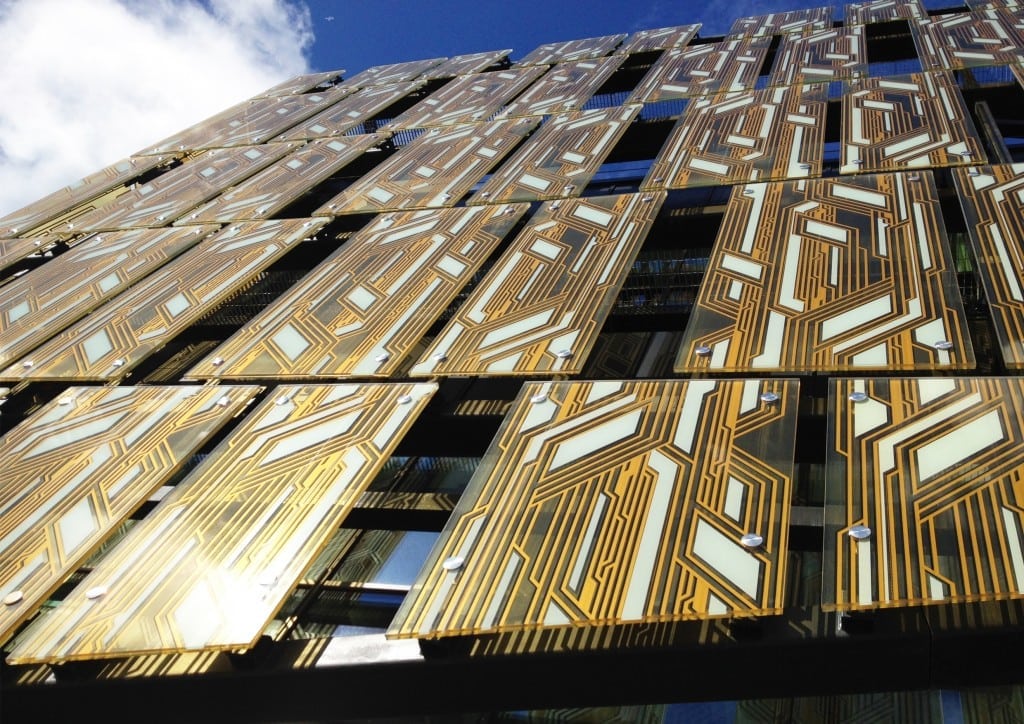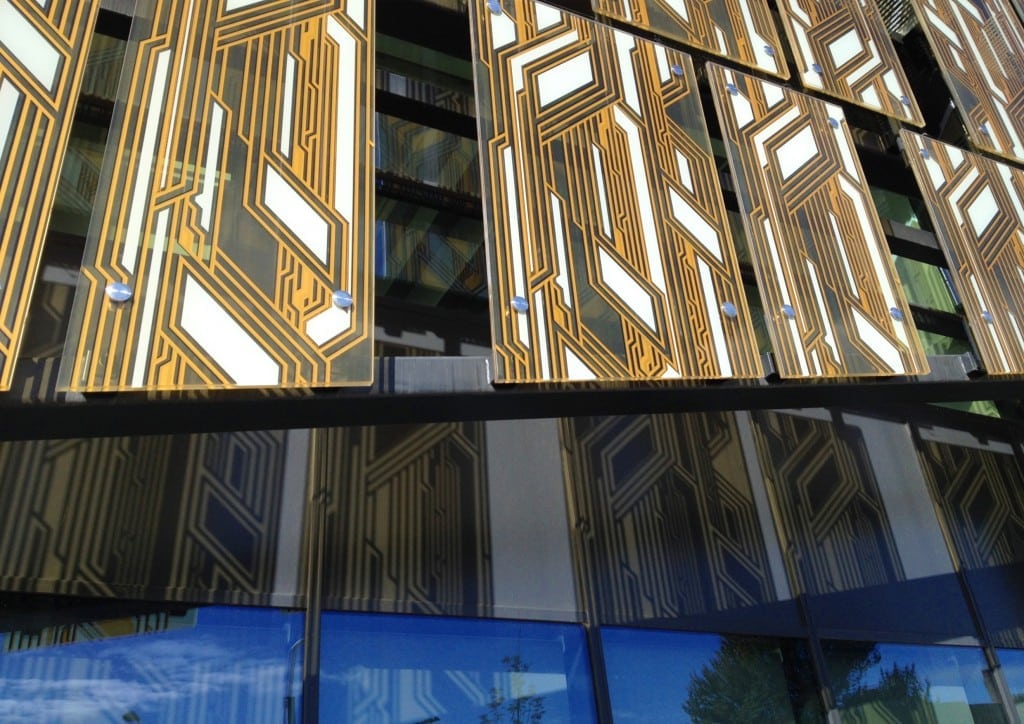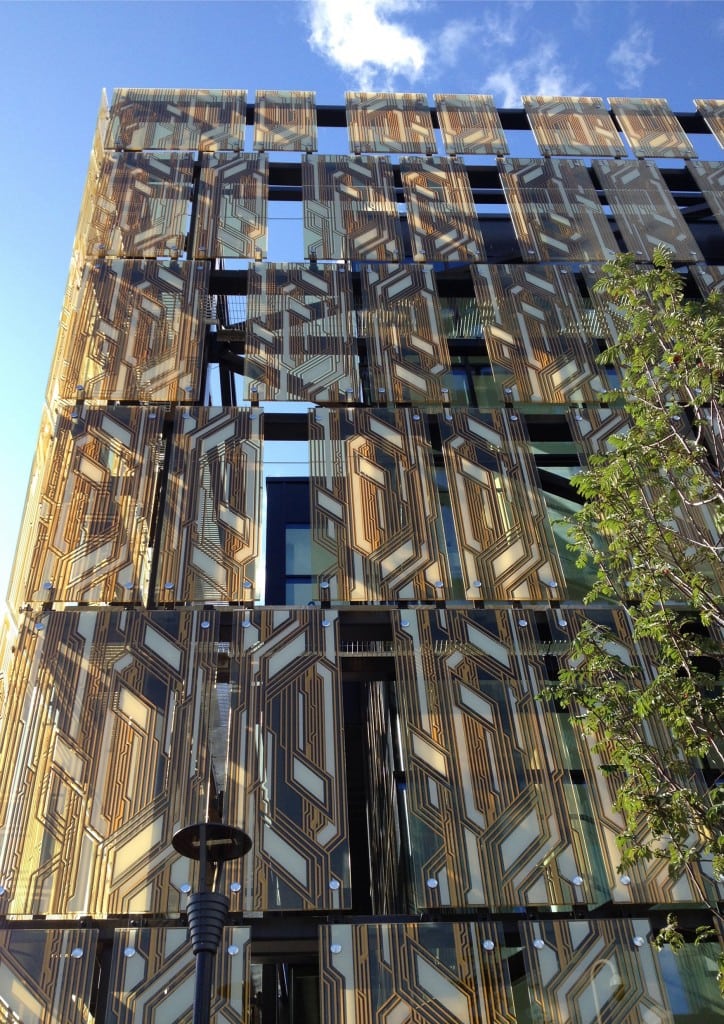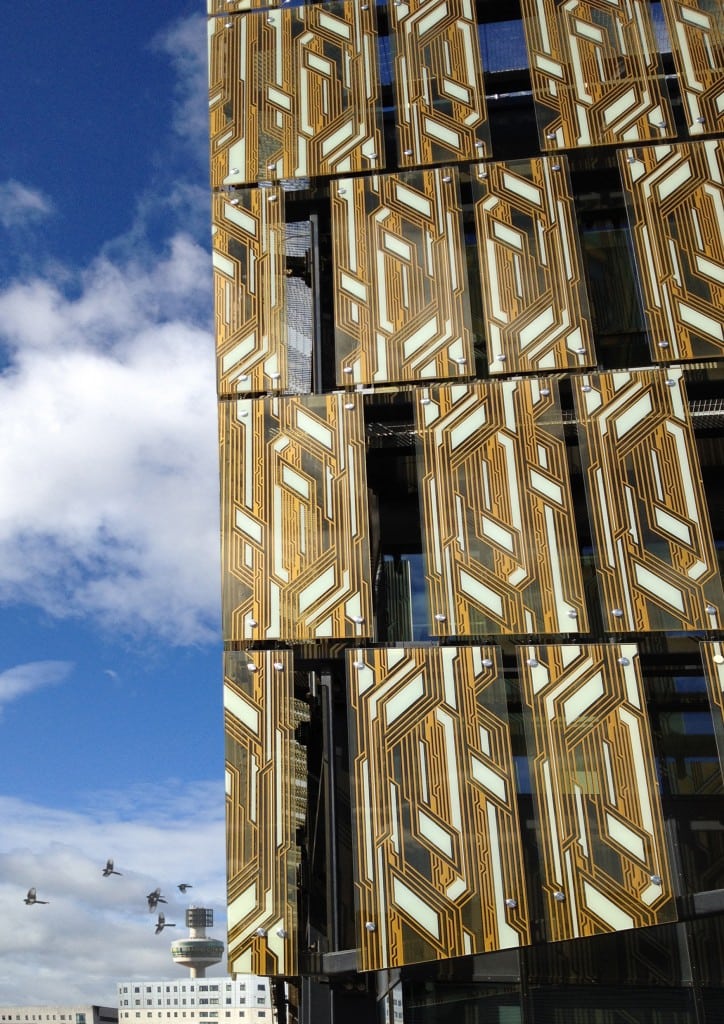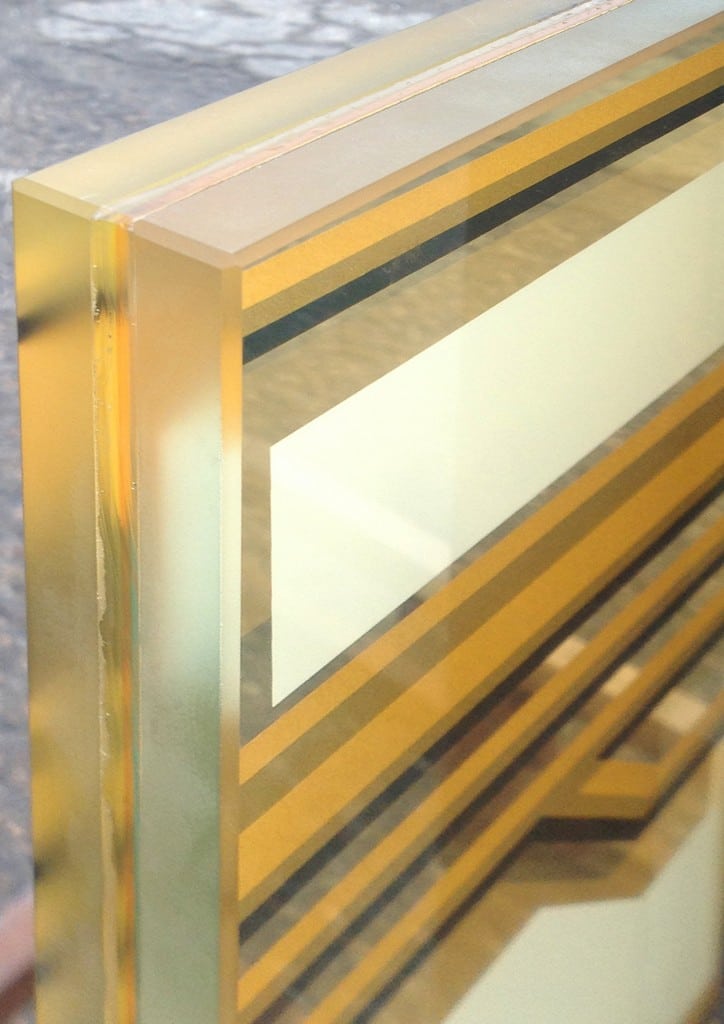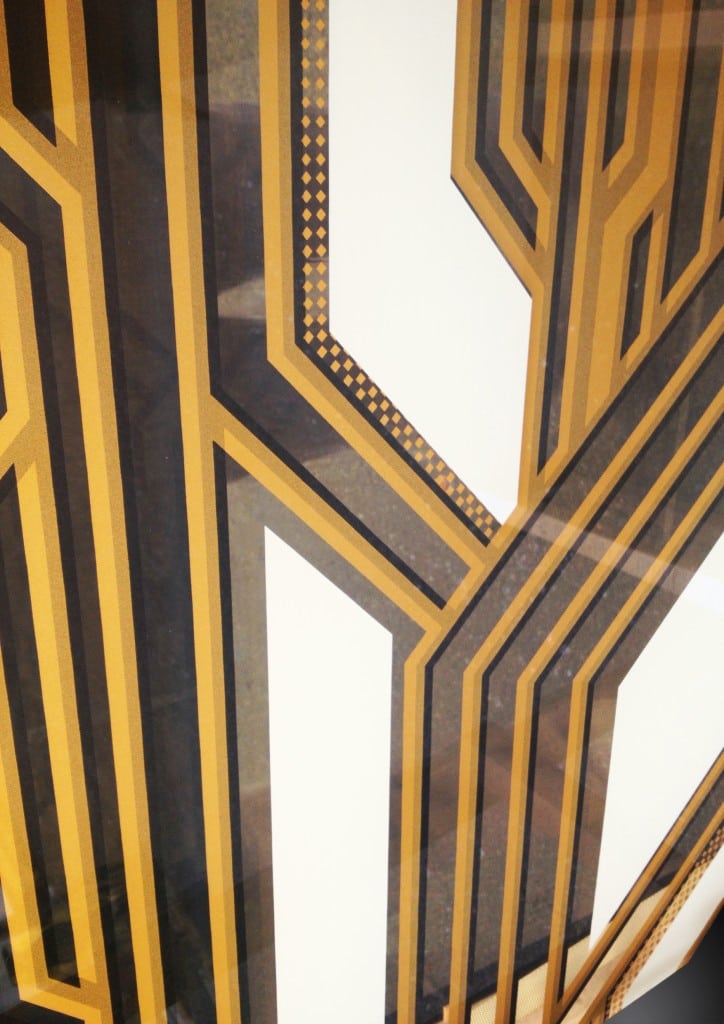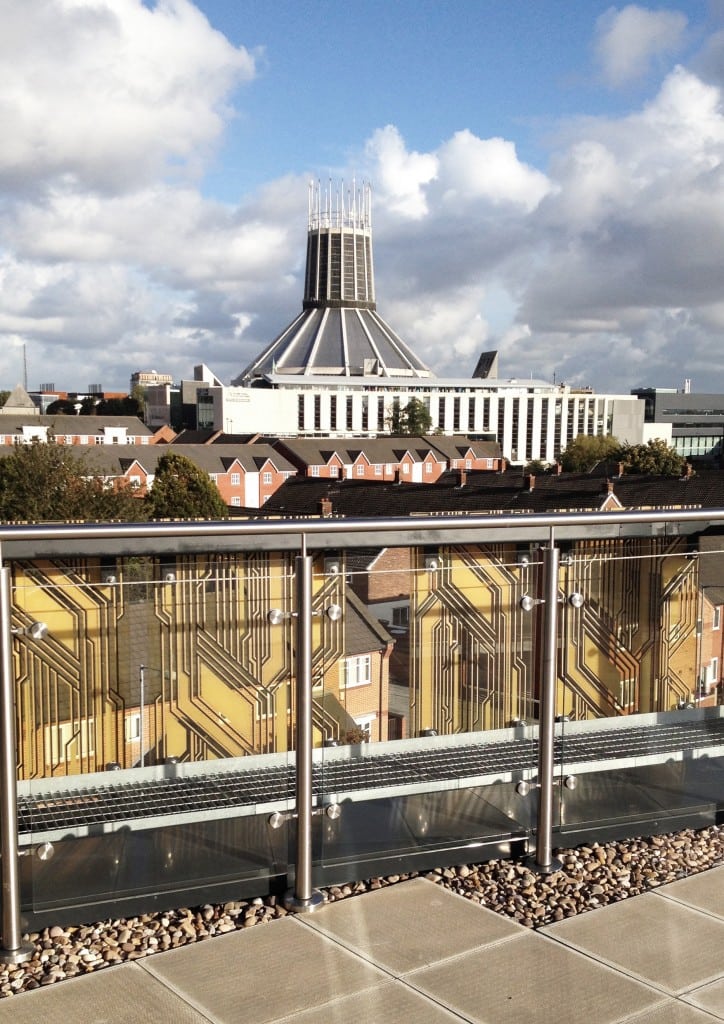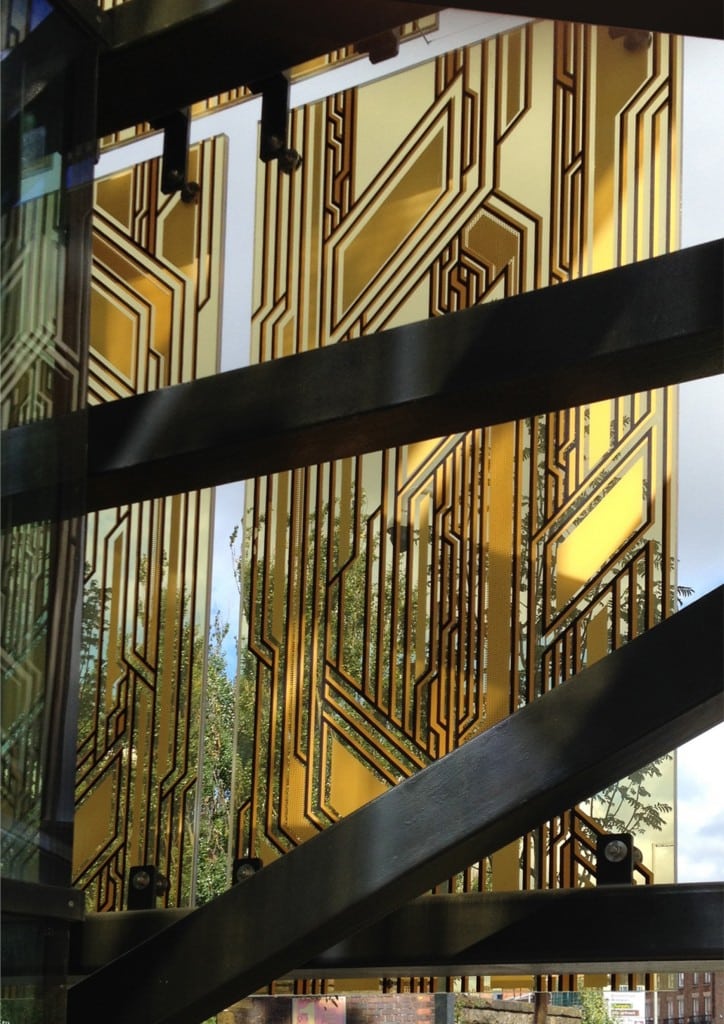BACKGROUND
Sensor City is a new global hub for sensor technologies, supporting a community of companies that are pushing the boundaries of sensor innovation. The purpose-built facility is home to world-leading facilities and expertise and therefore needed its exterior to be as impressive as the internal hub.
The planning department at Liverpool City Council and Public Art Officer, Lesley Woodbridge supported the idea of incorporating Public Art into the facade of the building.
The project architect Richard Mallinson from IBI Group organised a competition to select an artist to design the facade glazing and in May 2016, Julian Stocks was chosen to design and oversee the manufacture of his facade artwork “Fields of Gold”.
DESIGN THEORY
The architectural glass façade needed to signal the aspirations of Sensor City. Additionally, the architects at IBI Group required a design that suggested the potential of this technology, without limiting the imagery to existing applications.
Various options were explored during the design development, and both students and staff were involved in this process. Professor Joe Spencer, University of Liverpool, provided a useful insight into a technological interpretation of the artwork.
Professor Spencer said: “The pattern on the veil represents the flow of sensor data in digital and analogue formats. The demarcation between the various segments could represent individual sensor channels as data flows from the sensor.”
And as Julian points out “The sensor technology developed in this building will have a reach that is limited only by the imaginations of the scientists.”
“This appeal to imagination finds form in the interpretations of the facade. Whilst the dominant evocation in the work is of data flows and the materials of electronics, it is important to encourage the broadest possible associations with the design, whether this is dazzle camouflage, a field of barley or photovoltaic cell.”
The significance of sensor technology impacts far beyond its material. And by avoiding monolithic references to what exists today, it is hoped that “Fields of Gold” will communicate an excitement for what is possible tomorrow.
VISUAL INTERPRETATION
The abstract design utilises a palette dominated by gold, an element valued in electronics as a conductor. This silkscreened decoration takes the form of reflective metallic enamels applied in combination with a transparent gold interlayer that tints the supporting ivory and black enamels.
The glass was designed with day and night-time views in mind resulting in a dramatic change of appearance to the façade depending on the time of day and location of the viewer, inside or outside of the building.
Very little was left to chance, including the reflection of the decoration in the background double glazing, the coloured shadows cast over the interior spaces and the multiple layers of the decoration viewed through the corners of the building.
MANUFACTURE
The glass was manufactured in Spain by Ariño Duglass, with Julian visiting the factory to oversee the production of sample panels. The manufacturing process began in December 2016 with the first panels on site for installation in January 2017.
This rapid processing of 700 square metres of glass was only possible thanks to careful planning and over 800 hours of design time to perfect this innovative printing system.
INSTALLATION
The glass was installed in February 2017 to great effect.
It is remarkable to note that no two adjacent panels are the same. This seemingly random sequence is in fact controlled by the use of 73 print types that are selected for each of the 299 panels.
RESULTS
The stunning exterior can be seen throughout the Knowledge Quarter in Liverpool and has attracted significant attention from both local and national stakeholders.
The Liverpool Echo found that Sensor City is the seventh most loved new building in the city, and the open topped tourist buses now include the building as part of the tour of Liverpool.
It is hoped that this “Fields of Gold” commission will be successful in winning architectural awards in the near future, reflecting the vision, skill and aspirations of the project.
QUOTE FROM JULIAN STOCKS
“It has been a very complex process, but a pleasure none-the-less. No project is possible without collaboration, and architect Richard Mallinson was the perfect collaborator. But the final credit needs to go to our client.
“The universities and in particular Mark Askem were the perfect client, giving me the time and latitude to create the very best result. Without them we would not have Sensor City as it stands today.”
